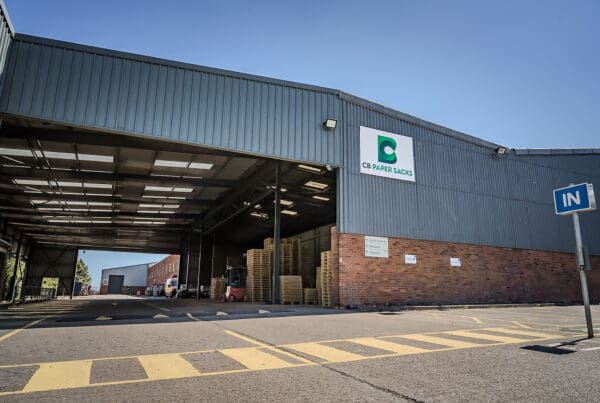Sustainability: Packaging with CB Sacks
As industries move towards reducing their carbon footprint, CB paper sacks offer an excellent alternative to plastic. These sacks are 100% reusable, recyclable, and biodegradable. They pose minimal threat to wildlife and can be disposed of responsibly.
Paper has the advantage of being bio-based, biodegradable, and recyclable. Studies from the Institute for Energy and Environmental Research showed a significantly lower impact of paper-based packaging on the environment compared to many other materials.
Sustainably sourced
Sustainable management of forest areas is a central element of the value chain for paper sacks:
- The fibres are extracted from tree thinning and from process waste from the timber industry and originate from sustainably managed forests in Europe.
- Managing forests sustainably means maintaining their biodiversity, productivity, regeneration capacity and vitality while leaving all interconnected ecosystems intact.
- Sustainably managed forests fulfil relevant ecological, economic, and social functions: they provide habitats for wildlife and recreational areas for people, as sustainability in packaging is an increasingly important topic as consumers and businesses alike seek eco-friendly alternatives to reduce their environmental impact.
CB Paper sacks, or paper bags, are often considered a sustainable option for packaging due to several reasons:
Benefits of CB Paper Sacks for Sustainability
Renewable Resource – Paper is made from trees, which are a renewable resource. Sustainable forestry practices ensure that trees are replanted after harvesting, helping to maintain forest ecosystems.
Biodegradable – CB paper sacks are biodegradable and compostable, meaning they break down naturally over time and do not contribute to long-lasting waste in landfills. Under the right conditions, they can decompose within weeks to months.
Recyclable – Most paper sacks can be recycled, which helps to recover materials for new paper products and reduces the need for virgin materials. This recycling process uses less energy than producing new paper from raw materials.
Lower Carbon Footprint – The production of paper sacks typically has a lower carbon footprint compared to plastic bags. While there are emissions involved in paper production, the overall lifecycle assessment often favours paper when considering disposal and degradation.
Versatility – CB Paper sacks can be used for a wide variety of products, including food, groceries, dry goods, and more. They can be designed for strength and durability, making them suitable for heavy items as well.
Customisable and Brand Friendly – Businesses can customise paper sacks with branding, colours, and designs, making them not only functional but also a way to enhance brand identity while emphasising sustainability.
While paper sacks have many benefits, there are some considerations to keep in mind:
Resource Use – Although paper is renewable, it still requires water, energy, and land to produce, so it’s essential to consider the sourcing of the paper and ensure it comes from sustainably managed forests.
Durability – Depending on the product being packaged, paper sacks may need to be reinforced or treated to ensure they don’t tear easily, especially when carrying heavier items.
Moisture Resistance – CB Paper sacks can be less effective in protecting items from moisture compared to some plastic alternatives, which may require additional treatments or coatings.
Transportation Emissions – The lightweight nature of paper sacks can help reduce transportation emissions; however, the overall weight and bulkiness can vary, so it is vital to consider logistics in the supply chain.
Overall, CB paper sacks represent a favourable option in the movement towards sustainable packaging solutions. By choosing responsibly sourced paper and encouraging recycling, both consumers and companies can play a role in reducing their ecological footprint and promoting a circular economy. As sustainability becomes more of a priority, innovations in paper sack designs, such as water-resistant coatings and enhanced strength, continue to evolve, making them an even better choice for various applications.



